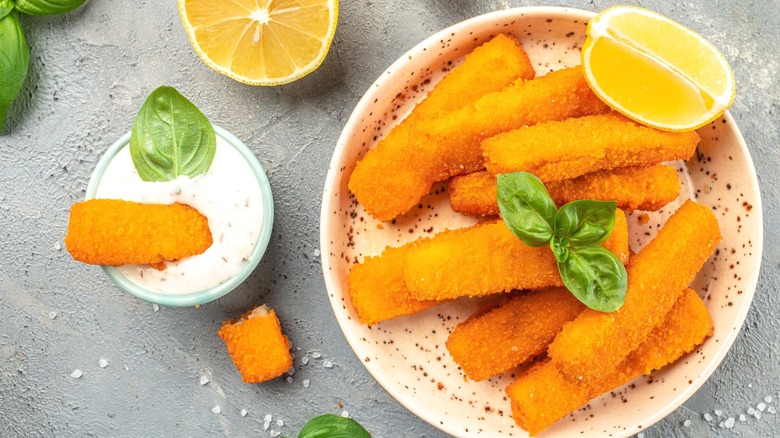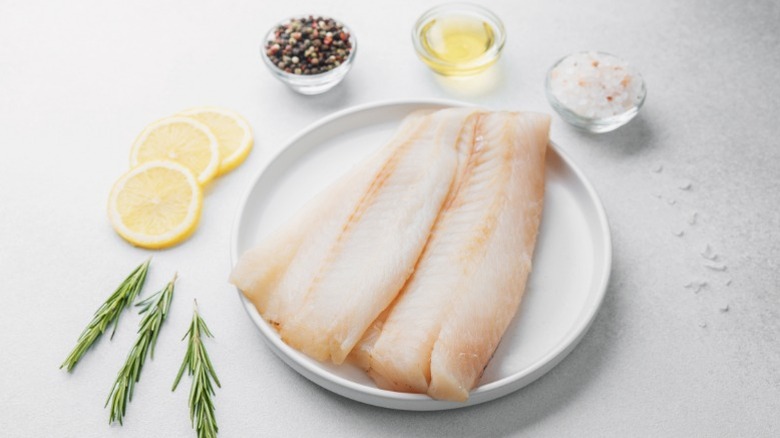The Type Of Fish You're Eating In Fish Sticks
As far as savory, breaded frozen food snacks go, fish sticks have often played second fiddle. Most people will sooner reach for chicken tenders or nuggets if they're in the mood for meat, or mozzarella sticks if they really want something in stick form. (We assume at least one person makes their dinnertime decisions based on that criteria.) But whether you're enjoying them on their own, with a bowl of flavor-enhanced tartar sauce, or served in fish tacos, all of us have some use for the humble fish stick. But what exactly is the "fish" in "fish sticks"? For just about every major brand, it's the same answer: Alaskan pollock.
Gorton's proudly advertises its use of Alaskan pollock, not far beneath the crusty old man in the yellow raincoat. Trident spotlights Alaskan pollock on its box as well, which also has a fishing boat trawling through water with mountains in the background, so you know it's serious about its fish. Van de Kamp, perhaps a little bashful, just says that it uses "minced fish" on the front of its box, but a quick look at the ingredients list tells you that it uses minced pollock. But what is Alaskan pollock, and why do these companies use it for their fish sticks?
Alaskan pollock is a mild white fish perfect for fish sticks
Alaskan pollock, a member of the cod family, is also sometimes called "walleye pollock". (These should not be confused with the abstract painter Jackson Pollock — you never want to be in a position where you go to a fishmonger and come back with a work of art worth millions of dollars.) They're a popular choice for seafood, especially fish sticks, because of their sweet, mild flavor. White fish in general usually lack the intense fishy flavor that puts some people off of seafood; this makes them ideal for something like fish sticks, which are often the first fish-related product a child eats. It's also why you'll often see UK fish and chips made with cod or haddock.
As an added bonus, pollock are also quite sustainable. The Alaskan pollock fishery is one of the largest in the world, but it's very well-run, with care taken to avoid overfishing. This is far from a given when it comes to the seafood industry, and it's nice to eat a fish without worrying about contributing to the death of an ecosystem. We'll happily dip our fish sticks in tartar sauce and toast to that.

